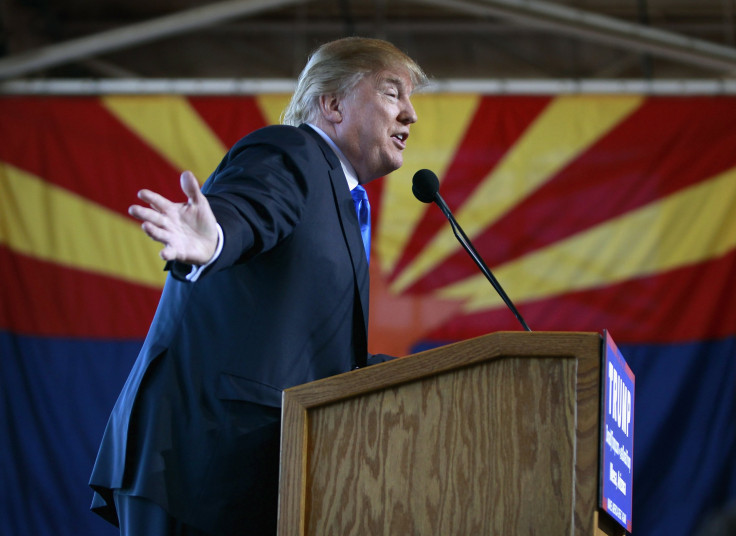Trump Could Help Turn 2016 Into The Year Of The Latino Voter In Arizona

Voter registration has surged in Arizona ahead of Tuesday’s presidential primaries, with more than 40,000 new voters joining the two major parties since the beginning of the year. It’s yet another sign that the political landscape in Arizona could be primed for a shift, particularly if there’s a major push to mobilize the Latino vote in the state.
Over the past few years, as the state’s Latino population has become a bigger and bigger share of its electorate, pundits have speculated that Arizona may be turning from deep red to purple. Various groups have made an effort to midwife that transformation, notably the labor union UNITE HERE and the community organizing group Promise Arizona, which collaborated on a major voter mobilization effort in 2012. But for the most part, the biggest mobilization investments have occurred in swing states with large Latino voting populations.
The growth rate of Arizona’s Latino vote has lagged behind those of Florida and Nevada as a result, but it is still substantial. Between 2000 and 2014, the number of Latino voters registered in Florida grew by 102 percent, while Nevada saw its share increase by 242 percent, according to U.S. Census data.
Solid red Arizona has rarely gotten the kind of attention and investment from major parties and outside spending groups that Florida and Nevada have enjoyed. But there, the Latino vote grew by a respectable 70 percent.
“Arizona has comparable growth among Latino registration and voting with zippo investment,” said Antonio Gonzalez, president of the William C. Valesquez Institute, a policy research organization that focuses on issues of importance to the Latino community. “Just think of what they could do with some investment. These people are overperforming.”
Gonzalez attributes that performance to local political issues, notably the fight over SB 1070, a draconian immigration enforcement bill signed by Gov. Jan Brewer in 2010. The battle went all the way to the Supreme Court, which in 2012 struck down some provisions of the law.
Perhaps because of SB 1070 and other issues particular to the state, Latino voter turnout has followed an unusual pattern for the past 12 years. It has actually tended to be higher in midterm years like 2006 and 2010, and lower in presidential election years. In 2008, which saw relatively high turnout across the country, Latino voters accounted for 11.7 percent of all votes cast in Arizona; in 2010, following the passage of SB 1070, they accounted for 18.8 percent.
This presidential election could be different, says Gonzalez.
“I think this year will break the pattern, and you’ll see a substantial surge in 2016,” he told International Business Times. The reason: Donald Trump.
Trump has made a hard line on undocumented immigration central to his campaign platform, calling for a wall across the Mexican border and famously accusing Mexico of sending “rapists and criminals” into the United States. Gonzalez believes his remarks could mobilize a large swath of the Latino community to come out and vote against him.
The question is whether that mobilization will make a significant dent or receive much in the way of outside support. Gonzalez pointed to California as an example of a state where the Latino vote has sway as part of a broader progressive coalition, but noted that the situation is different in Texas, where conservatives still dominate.
“As for Arizona, I don’t know. Maybe,” he said. “Let me tell you what I do know: The Latino vote is growing dramatically.”
© Copyright IBTimes 2025. All rights reserved.






















